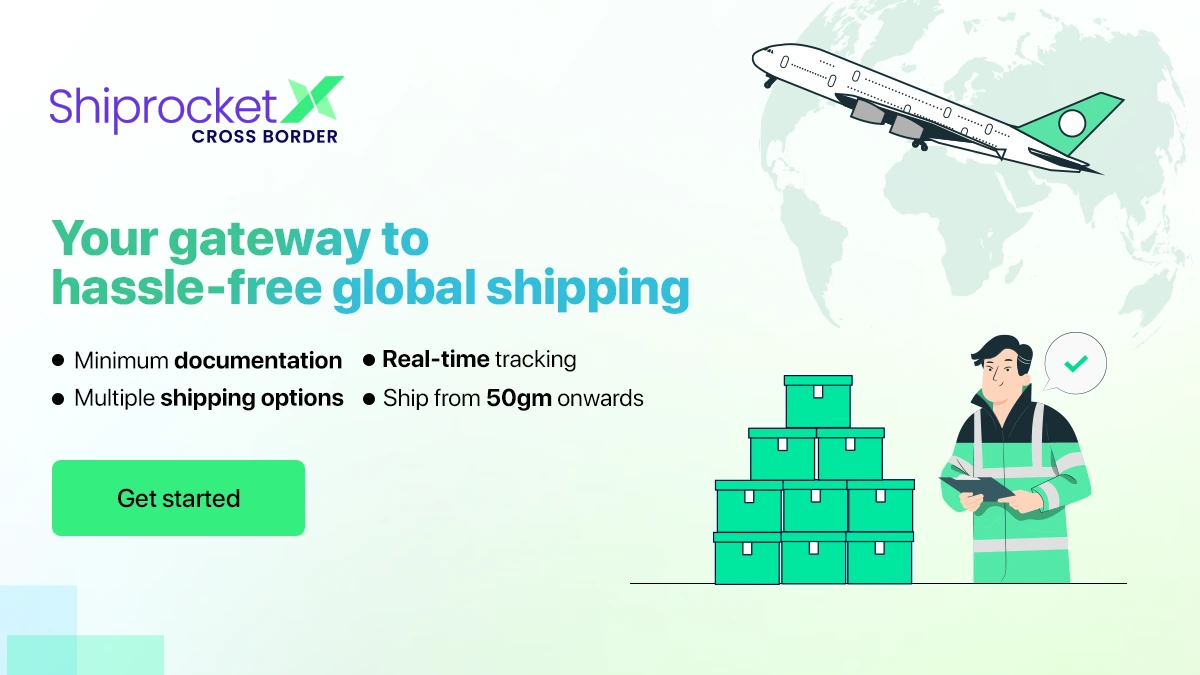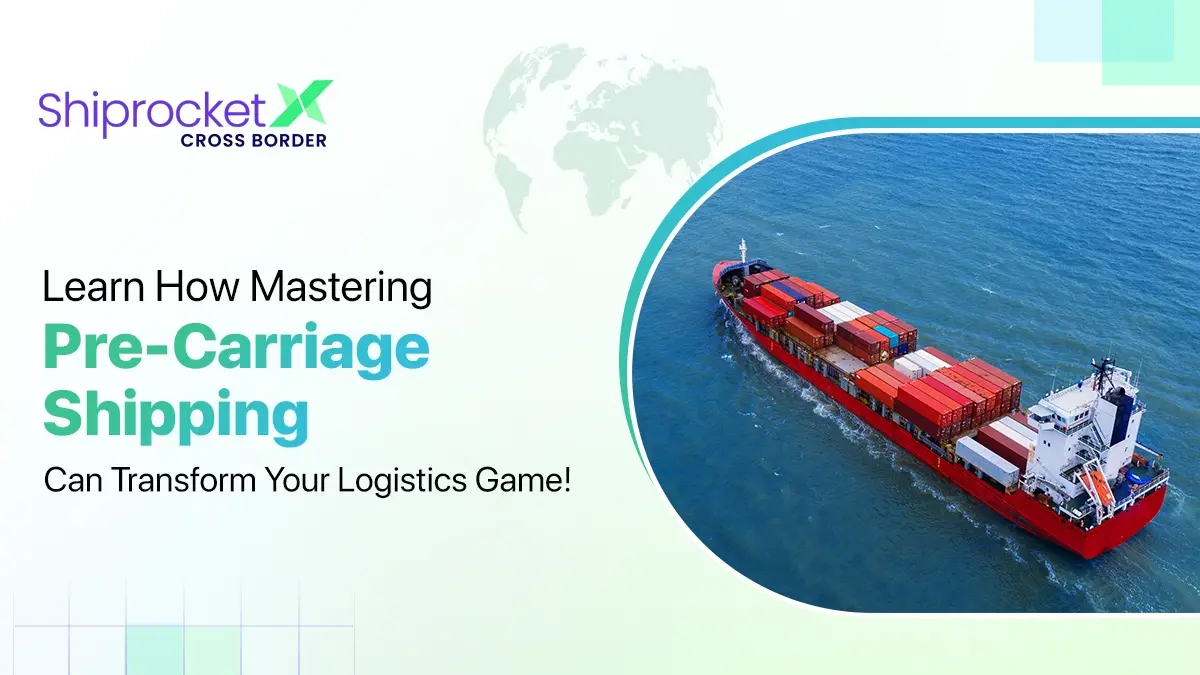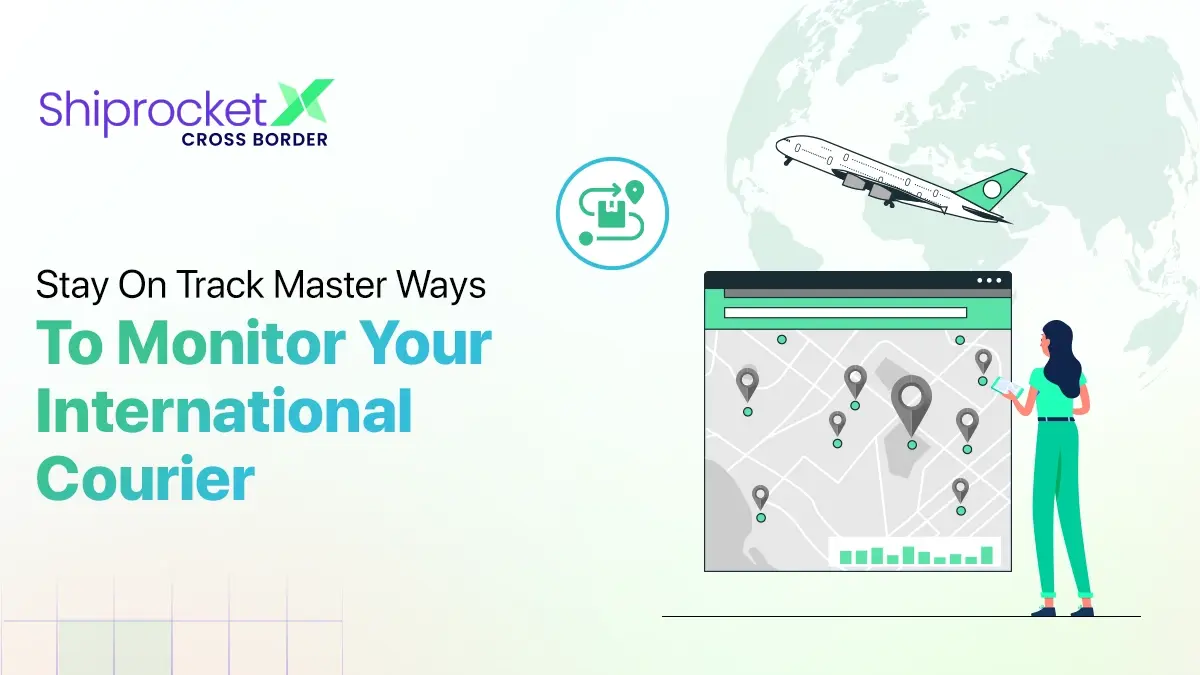Global eCommerce: Maximizing Sales Worldwide
Over 60 years ago, Canadian theorist Marshall McLuhan introduced a new term, “Global Village.” The term refers to a world that’s slowly becoming a single community of people linked by new forms of technology. With constant discoveries and updates in technology, particularly telecommunications, the world has become increasingly interconnected. Global eCommerce is a prime example of a world interconnected via technology.
Switching your business from a physical store to an online business model is no longer a choice but a necessity if you want to thrive in the competition. Let’s get a deeper understanding of global eCommerce, dive into the current trends, and explore strategies to build your global eCommerce business.

Understanding Global eCommerce
The process of selling goods and services online across geopolitical borders to international consumers in other countries is known as Global eCommerce. Compared to local eCommerce markets that entail retailers selling only within their country, global eCommerce enables sellers to expand their market horizons into non-native markets and reach untouched territories.
The emergence of technology has made it easier for businesses to sell their products globally through online marketplaces. A global expansion of your eCommerce business comes with the following benefits:
● Enhancing sales and profit margins: The larger the buyers’ market, the greater the profit potential. Launching your services in international markets will help you bring new sources of revenue and secure long-term gains.
● Low entrance barriers: Unlike popular belief, the number of hurdles to cross while entering global markets for an eCommerce business is extremely low. This makes it very easy to trade your products globally. With the right research regarding laws and regulations, you will be up to speed on the political landscape of your target market.
● Scaling: The brilliance of a global marketplace is that you do not need to have a large presence in a specific region to sell your products. Anyone and everyone has an equal shared space to promote and sell their products. Having a good marketing strategy will help you conquer the market.
● A competitive edge: When you expand across borders, you will get the opportunity to target new territories and market your products. By bringing your products across borders, you can also overcome the problem of market saturation and open new paths for revenue generation.
Exploring Global eCommerce Growth and Statistics
Recent years have seen tremendous growth in the eCommerce sector. It has now become a crucial component of the modern global retail industry. Even while eCommerce is expanding rapidly throughout the world, some areas stand out as having the biggest and fastest-growing markets. The Asia-Pacific region is at the forefront of the eCommerce revolution. India, China, and Southeast Asian countries are the leading players in this growth.
Expert predictions indicate that the growth in global eCommerce sales will continue, albeit at a comparatively stable pace. That brings us to the question: How many people are shopping online? About 2.71 billion consumers purchase products online. Most of these purchases is taking place through smartphones, with nearly 91% of shoppers opting for this medium.
The global retail eCommerce sales recorded in 2023 were approximately USD 5.8 trillion. Projections imply a 39% growth in the coming years, surpassing USD 8 trillion by 2027.
How Indian SMEs are Going Global?
Expanding business into foreign markets and achieving a global presence is inevitable to thrive in this highly competitive and interconnected world. Expanding globally helps businesses grow their brand name, gain a new customer base, and lead to economies of scale. Digitalization and the eCommerce wave have enabled Indian SMEs to go global. These helped the businesses access the vast online marketplace, increase visibility, and enhance brand awareness. Many Indian business giants have already created their mark in the global market. Some of them are Tata, Titan, Mahindra, Amul, etc.
Building Your International eCommerce Strategy
Fortunately, eCommerce is an excellent method for conventional businesses and retailers to test the waters overseas before actually opening a physical store on foreign grounds. However, it is vital to understand that every nation is different and needs a separate approach before launching your global expansion.
Here are some crucial points that require assessment to decide if your eCommerce business is prepared for global expansion:
● Operations: Ensure that your current resources are prepared and capable of managing international expansion, even while there’s no need to create all new procedures and hire a whole new staff. Also, having distinct teams and budgets for domestic and international operations might be beneficial.
● Product demand compared to global supply: Sellers can keep an eye out for the frequency of foreign visitors to their website or eCommerce applications. They should also check for the most in-demand products in their target foreign markets. These can be done through simple SEO tools that track the search activity.
● Expansion scope: It will be easier to take well-defined and concrete actions towards success once you have a clear understanding of the extent of your expansion and the goals to be attained. Identify your company’s requirements, such as expanding into a new physical location or modifying your website’s design or payment options to accommodate your target audience.
Establishing Your Global eCommerce Platform and Integrations
Once you have established your expansion strategy or GTM (Go-to-Market) strategy for international markets, you can start to worry about customising your eCommerce platform to meet the requirements of foreign markets. Attention to detail is key to impressing your target audiences. Here are a few things that you can think of while establishing your global eCommerce platform:
● Setting up costs: The perception of price by a customer is just as significant as the product’s actual price. So, employing a strategy to trick your buyers into thinking that pricing is lower than the average, even while offering the same rates as the competitors will help you maximise sales. Ensuring that you display prices in the local currency of a specific nation can help you gain more sales.
● Payment options: Digital transfers, UPI, online wallets, and debit and credit cards are the most commonly used methods to make payments while using eCommerce websites. It is estimated that the number of global digital wallet users will grow by 53% or over 60% by 2026. Instead of defaulting to traditional payment methods, you can cater to your buyers better by providing additional payment options.
● Customer service: Regardless of where your customers are, customer satisfaction is key. You must provide your customers with services that intensely please them. Especially in cases where return management and exchange facilities are offered, you must be mindful to address these issues with great attention to detail.
● Logistics and shipping facilities: Most issues that eCommerce businesses face come under the shipping and logistics domain. Retailers may more easily and effectively handle these logistics problems using multi-carrier software platforms and new technologies. It’s crucial to ensure clients have various delivery choices and clear pricing, particularly when selling internationally. Retailers that provide premium delivery options such as expedited shipping experience a growth trajectory that is 60% faster than average. Therefore, even while providing just a basic home delivery option could be simpler, it might be wise to consider growing your options.
Current Trends in Global eCommerce
International eCommerce trends that are screaming ‘more sales’ and ‘remarkable customer shopping experiences’ in 2024 are:
Personalised Buying Experiences
Personalisation is the go-to marketing gimmick for businesses today. Businesses tailor marketing prompts and experiences to directly speak to their target customers’ interests. They accomplish this by collecting and analysing customer purchase behaviour data.
In 2024, you’ll likely witness more personalised marketing campaigns and online store experiences. The personalised approach, like giving product recommendations or running emails campaigns, makes it easy for shoppers to find products they’re fond of and can also get more conversations started, increasing engagement for your brand.
Social Commerce
Social commerce is where shoppers can discover new products and directly checkout through their social media app.
For instance, a user might find a product through a shoppable post on Instagram, check for reviews in the comments section, and buy the product without leaving the app.
Social selling is flourishing these days. People love buying through Instagram, Facebook, or any other social media ads. Experts expect social commerce to expand three times by 2025. Consequently, businesses are using social platforms to sell and market their products.
Fast and Easy Checkouts
It has become a necessity to offer customers a hassle-free shopping experience on every screen, from desktops and smartphones to other mobile devices.
Online retailers must simplify the checkout process by adding multiple payment options like credit/debit cards, UPI, digital wallets, pay-later, etc., and reduce the steps at checkout.
Minimising the friction at checkout dampens the possibility of shopping cart abandonment and hikes conversion rates.
Adopting Artificial Intelligence (AI)
Artificial Intelligence is already swarming the digital space at a rapid speed, and its use for optimising the shopper’s online journey is all the more prevalent in 2024.
Businesses can use it to automate their eCommerce processes, like integrating chatbots into their customer service to answer common customer queries. AI-powered chatbots and automation are two of the top trends for 2024 and the coming future.
AI predictive algorithms are also useful in analysing heaps of data, like buyers’ demographics, website behaviour, and purchase history to help you make informed decisions.
Voice and Image Search
Adding ease and fun to the online shopping experience by allowing search through voice commands and images is another rising trend in global eCommerce. Industry experts expect around 8 billion digital voice assistants to be in use in 2024.
For instance, Google has a voice command icon that allows you to speak into the mic and search for content or products, plus an image search option where users can upload a picture or use a visual description to find the exact or similar products. Businesses can use the same for their eCommerce websites to provide visitors with a better shopping experience.
User-Generated Content (UGC)
The product reviews, social media posts, or blogs created by customers you see floating around the internet are all user-generated content (UGC). It often showcases authentic and organic customer opinions or perspectives that help build trust and credibility.
The trend to instill user-generated content through content marketing, search engine optimisation (SEO), and storytelling-laced marketing strategies in online stores is making its way to international eCommerce quickly.
Brands can use UGC to highlight their product’s usage, listen to customer concerns, and build an online community.
Short Videos
Global eCommerce is picking up on the viral trend of using videos to engage customers uninterruptedly. These compelling short films serve as attention grabbers and mediums to acquaint the potential buyer with your products.
For instance, if you’re selling gadgets online, you can create a short video demonstrating the features and use of your products.
In 2024, you’ll see more video content like product demos, behind-the-scenes (BTS) videos, and shopper testimonials shared through social media and brand websites.
Cross-Selling
Cross-selling is a sales technique that entices customers to buy more items than they planned to. You use complementary product suggestions to amplify customers’ shopping experience and the number of products in their carts, increasing your average order value.
Some renowned global apparel brands like Zara and H&M use this feature on their eCommerce website. They often pop up a prompt saying ‘complete the look’ and add accessories or clothing recommendations that complement the outfit the shopper chose. It often lures the customer to shop for those items as well.
With heightened use of personalisation and AI, cross-selling is likely to stay as one of the raging international eCommerce trends in 2024.
Subscription-Based Models
You may have come across subscription models on the famous aggregator platform -Amazon. This model allows buyers to subscribe for a product that they regularly need, at a small fee.
For instance, a customer is likely to use skin care products or other daily-use items frequently. Amazon gives them an option to subscribe it monthly or quarterly instead of repeating the purchase each time. It also allows them to choose the date they want the product delivered to their doorstep every month, making it convenient for the customer.
This model is a win-win for businesses too as itIt provides them with a predictable revenue stream.
Referrals and Rewards
Do you see spinning wheels, coupons, cashbacks, and other types of rewards everywhere these days? These are trending loyalty programs to make the customer stick around your online store or brand.
Customers can collect points or rewards on repeat purchases and also get incentives through referral programs by referring products to new customers. For instance, a brand may offer redeemable points at every purchase that the customer can avail on their next purchase to get a discount.
These programs can give your high-value customers exclusive benefits and help you nurture strong customer relationships.
Sustainable Practices in eCommerce
You may find that millennials, Gen Z, or younger consumers are inclined towards preserving the environment and engaging in responsible buying. About 62% of consumers say they “always or often” want to buy products that are sustainable for the environment, and this figure was just 27% in 2021.
In 2024, you can expect this number to grow, with more customers demanding businesses to be environmentally conscious. So, it’s wise to encash every opportunity to incorporate eco-friendly practices in your online business.
Augmented and Virtual Reality
Augmented and virtual reality is pretty recent in global commerce trends, but can potentially revolutionise eCommerce.
Augmented reality is where you see a computer-generated image superimposed on a buyer’s view of the real world. For example, Myntra offers a virtual try-on feature for outfits and makeup products. Customers can see how the outfit or makeup product looks on them before purchasing.
Virtual reality puts a user into a simulated environment through a headset or any other device. IKEA uses virtual reality showrooms to give its customers a 3D shopping experience, similar to walking around a physical store.
AR and VR features give customers more confidence and surety in buying the product, thereby influencing their purchasing behaviour.
Conclusion
International expansion will be a choice and a need as technologies develop and our world becomes more interconnected. Fortunately, major and small retailers benefit from platforms like BigCommerce to grow their operations rapidly in the international market. Naturally, global eCommerce may seem intimidating to a tiny, local business. However, with the aid of this guide, you’ll get additional knowledge on how to expand your company’s operations internationally.
Global eCommerce faces several challenges. These are payment preferences, tax laws, security breaches, government regulations, cultural diversity, different business models, and more.
From making product discovery easier to pricing more competitive, the roles of eCommerce are plenty. These include market expansion, reduced transaction costs, the ability to reach a larger audience worldwide, and making it easier to export goods to more customers
The shift towards eCommerce has brought about many benefits to the global market. It has reduced barriers to entry for SMEs and local businesses, increased cross-border trades, reduced transaction costs, lowered the cost of doing business, and more.






